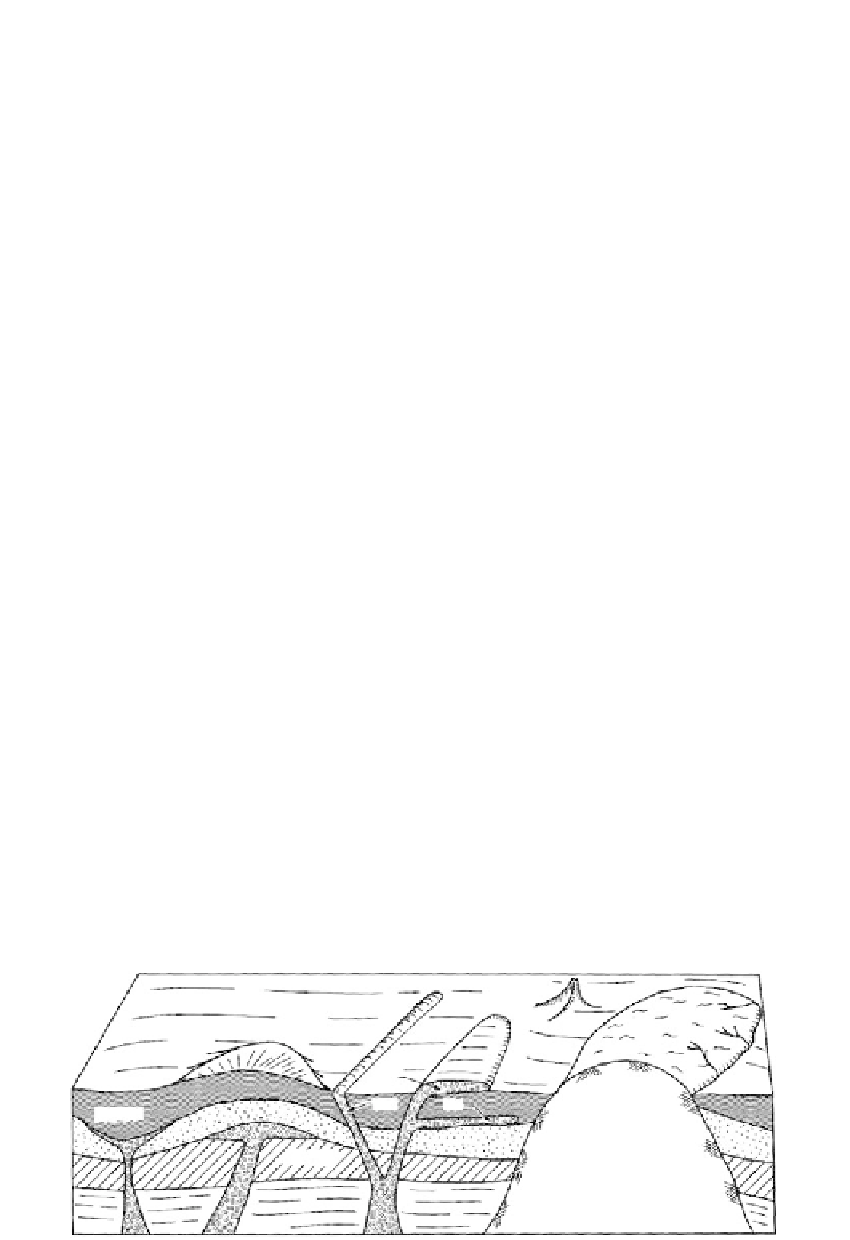Environmental Engineering Reference
In-Depth Information
TABLE 6.3
Igneous Rocks: Formations and Characteristics
Formation
Characteristics
Surface Expressions
Intrusive
Batholith
Huge body, generally accepted as having an
Irregular: drainage develops along
exposed surface area greater than 90 km
2
discontinuities, in medium to fine
and no known floor
Stock
Small batholith
Same as for batholiths
Laccolith
Deep-seated, lenticular shape, intruded into
Dome-shaped hill often formed by lifting
layered rocks. More or less circular in plan
and arching of overlying rocks.
with flat floor
Drainage: annular
Lappolith
Basin-shaped body, probably caused by
Basins: drainage centripedal
subsidence of the crust following a magma
intrusion. Deep-sealed
Pluton
Body of any shape or size, which cannot be
Various: generally similar to batholiths
identified as any of the other forms
Dike
Formed by magma filling a fissure cutting
Younger than enveloping rocks, they often
through existing strata. Often thin, sheet-
weather differentially, leaving strong
like (see
Figure 6.16)
linear ridges. See sill below
Sill
Formed by magma following a stratum.
Weather differentially in tilted strata
Rocks are baked and altered on both sides
forming ridges (see
Figure 6.19)
.
In
(flows bake only on the underside). When
humid climates rocks of dikes and sills
formed close to the surface, sills develop the
often decompose more rapidly than
characteristic columnar jointing of flows
surrounding rocks, resulting in depression
(see
Figure 6.17)
lineaments, often associated with faults
Volcanic neck
The supply pipe of an extinct volcano
Distinctly shaped steep-sided cone
formed of solidified magma
remains after erosion removes the
pyroclastic rocks
Extrusive
Flows
Outwellings of fluid magma solidifying on
●
Young age: varies from broad flat plains
the surface, forming sheets often of great
to very irregular surfaces
extent and thickness. May have
●
Maturity develops a dissected plateau,
characteristic columnar jointing near
eventually forming mesas and buttes in
surface. Only underlying rocks are baked
arid climates
●
Drainage: parallel, coarse on young, flat
plains
Volcanic
neck
Flow
Dike
Sill
Lapolith
Batholith
(exposed by erosion)
Laccolith
FIGURE 6.15
Forms of intrusive and extrusive igneous rock types (batholith, dike, and volcanic neck are exposed by erosion).




